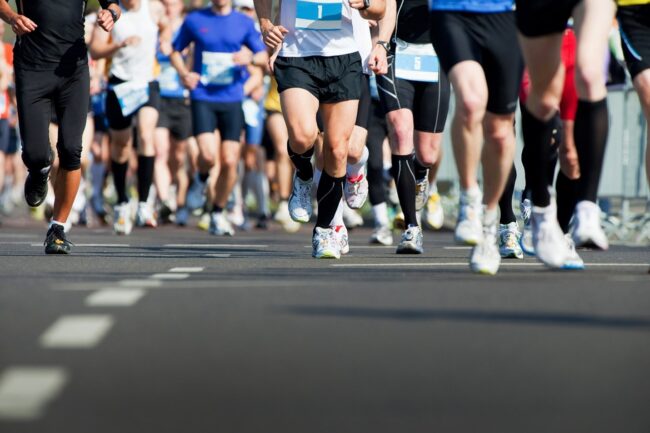Kevin Morgan of New York, a seasoned athlete experienced in both marathons and Ironman events, has mastered the art of adapting training plans for various race distances. This adaptability is crucial for any athlete seeking to excel in multiple race formats, each with unique demands and challenges. In this article, we will delve into the key principles of adjusting training plans for different race distances, using Kevin’s experiences as a guide.
Understanding the Basics
Before diving into the specifics of different race distances, it’s essential to understand the fundamental differences between various types of races. Marathons and Ironman events, for instance, require distinct training approaches due to their differing physical and mental demands.
- Marathon: A marathon is a long-distance running event of 26.2 miles (42.195 kilometers). Training focuses on building endurance, strength, and mental resilience to sustain a steady pace over a prolonged period.
- Ironman: An Ironman triathlon comprises a 2.4-mile swim, a 112-mile bike ride, and a 26.2-mile run. Training for an Ironman demands a balanced approach to swimming, cycling, and running, along with transitions between these disciplines.
Building a Base
The foundation of any successful training plan is a solid base. Kevin emphasizes the importance of establishing a strong aerobic base before increasing the intensity or volume of workouts. This base-building phase typically involves several weeks of low to moderate-intensity training to enhance cardiovascular fitness and muscular endurance.
For both marathons and Ironman events, the base phase should include:
- Consistent weekly mileage: Gradually increasing the distance covered each week.
- Long runs: Essential for marathons, these runs help build the stamina needed for race day.
- Cross-training: For Ironman events, incorporating swimming and cycling during the base phase ensures balanced development across all disciplines.
Specificity in Training
Once a solid base is established, training should become more specific to the intended race distance. Kevin Morgan of New York highlights the importance of tailoring workouts to mimic the demands of the target race.
Marathon Training
For marathons, specificity means focusing on sustained running at target race pace, building up long runs, and incorporating speed work to enhance overall running economy. Some key workouts include:
- Tempo Runs: Running at a comfortably hard pace to improve lactate threshold.
- Interval Training: Short bursts of high intensity running to boost speed and cardiovascular capacity.
- Long Runs: Gradually increasing the distance of long runs, peaking at around 20-22 miles before tapering.
Ironman Training
Ironman training requires a balanced approach to ensure proficiency in swimming, cycling, and running. Kevin’s strategy includes:
- Brick Workouts: Combining two disciplines in a single workout, such as a bike ride followed by a run, to simulate race conditions.
- Long Rides and Runs: Building endurance with long-distance workouts for both cycling and running.
- Swim Workouts: Incorporating open water swims to acclimate to race conditions, along with pool workouts for improving technique and speed.
Tapering for Peak Performance
Tapering is a critical phase where training volume decreases, allowing the body to recover and peak for race day. Kevin stresses the importance of a well-structured taper for avoiding excessive fatigue while maintaining fitness.
- Marathon Taper: Typically lasts two to three weeks. Long runs are reduced, but intensity is maintained with shorter, faster workouts.
- Ironman Taper: Generally lasts around three weeks. The focus is on reducing overall training volume while keeping race-specific workouts to stay sharp.
Nutrition and Recovery
Kevin Morgan of New York underscores the significance of nutrition and recovery in adapting training plans. Proper fueling and recovery strategies are essential to support the increased training loads.
- Nutrition: A balanced diet rich in carbohydrates, proteins, and fats is crucial. During long workouts, practice race-day nutrition to find what works best.
- Recovery: Incorporate rest days, active recovery sessions, and techniques such as foam rolling, stretching, and massage to promote muscle recovery and prevent injuries.
Mental Preparation
Lastly, mental preparation is a key component of adapting training plans for different race distances. Kevin’s experience highlights the importance of mental resilience and race-specific visualization techniques.
- Marathons: Focus on developing a strong mental strategy to handle the inevitable tough moments during the race.
- Ironman: Prepare for a long day with mental techniques to stay focused and positive throughout the swim, bike, and run segments
Adapting training plans for different race distances requires a strategic approach that balances endurance, intensity, and recovery. Kevin Morgan of New York’s experiences with marathons and Ironman events offer valuable insights into tailoring training to meet the unique demands of each race. By building a solid base, focusing on specificity, tapering effectively, and prioritizing nutrition and recovery, athletes can optimize their performance and achieve their race day goals.
